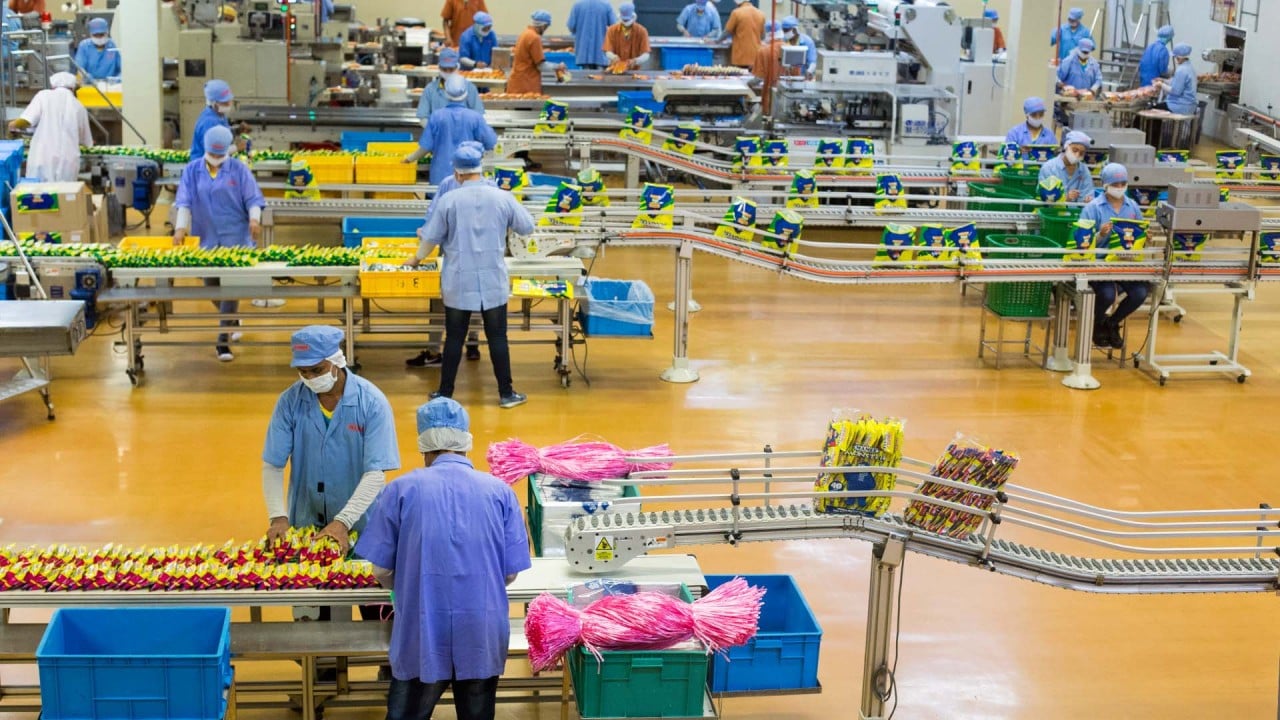
Tandoori-style, pakoras and milkshakes – India’s love for Maggi noodles knows no bounds
- Launched 40 years ago in India, the product was initially aimed at time-pressed working women looking for a quick snack option for their family members
- It has been reimagined in many ways since then, with an array of varieties like Maggi parathas and tandoori paneer Maggi sold in street stalls across the country
The Maggi brand of instant noodles has changed the dynamics of Indian cooking, especially for working women since its launch four decades ago.
For a country that prided itself on slow cooking, the Nestle-owned ready-to-use food product gave mothers the option to rustle up a quick snack for their famished kids when they returned from school.
Even the Swiss brand’s advertisements, with the “fast to cook, good to eat” tagline, featured a working mum who did not have time to make traditional Indian foods, dishing out the 2-minute noodles garnished with masala from a sachet.
What’s driving India’s newfound obsession with saatvik food?
An article in The Hindustan Times last week traced Maggi’s influence on the country of 1.4 billion since it was first introduced in 1982 at a price of 2 rupees (US$0.03) for a 100 gram pack, which made it affordable to all sections of society.
Food historian Kurush Dalal described Maggi noodles as “one of the best and worst things that has happened to Indian food”.
“It brought a quick carb fix with a chatpata (tangy) taste and made everybody a cook. But it also took away nutrition and a lot more from food,” Dalal said.
“Families have tried to get around this by spiking it with everything from vegetables, sausages, ham to egg drops and salami.”
Dalal said his favourite version was what his wife puts together, with cheese slices, onions and chorizo sausages from Goa.

According to the World Instant Noodles Association, India – the fourth-largest instant noodles market – accounted for 6.73 billion servings in 2020 after China, Indonesia and Vietnam.
As Maggi’s popularity soared, it once enjoyed a 90 per cent market share which has now declined to 60 per cent amid competition with brands like Top Ramen, Wai Wai and Knorr.
In 2015, India’s food safety regulator banned Nestle’s Maggi after detecting high amounts of MSG and lead in its noodles. The embargo was lifted the same year following the company’s improvement of its safety standards.
From star chefs to mythical queens, golgappas are ‘India’s favourite snack’
Controversies aside, today Maggi noodles have been reimagined in many ways according to local flavours as the country’s street food scene evolved.
Hawkers – who usually served noodles with vegetables, butter and eggs – now add tomato, onions and green chillies to make tandoori paneer Maggi and cheese and butter to create chilli garlic cheese Maggi.
Other improvisations include Maggi pakoras (chickpea flour fritters with noodles), Maggi parathas (flatbreads stuffed with cooked noodles) and Maggi bhel puri (puffed rice with chutneys, onions, potatoes and noodles).
Bangalore-based IT professional Tara Murali said Maggi’s masala-flavoured noodles are her go-to food for when she does not feel like cooking, adding that she uses spring onions and bell peppers or an omelette in the dish to make it “a bit nutritious and assuage [my] guilt about eating junk food”.
The street fare is also sold at the ubiquitous Maggi stalls that dot the vast swathes of India – even in the Himalayan heights of Ladakh bordering China – where hikers and travellers line up near mountain passes to grab a quick bite.
“Recently I was driving in the hilly state of Arunachal Pradesh with a snow blizzard and realised that colder the weather, the better Maggi noodles taste,” said Aditya Patel, a racing car driver from Chennai.
The noodles have also been used in culinary experiments, including being cooked with milk and chocolate sauce.

Food blogger Arjun Chauhan recently shared a video of a street food vendor making Maggi noodles with Roohafza (rose-flavoured sherbet) which was dubbed as a “sickening” variation by enraged netizens. New Delhi’s Housefull Café went a step further by serving noodles in a glass of beer.
Though Maggi noodles has become synonymous with instant noodles in India, Dalal, the food historian, said he felt that “Top Ramen is far superior.”
“But what everyone will agree on whether they are fans of Maggi noodles or not is that it never gets done in two minutes. It takes far longer,” he quipped.


